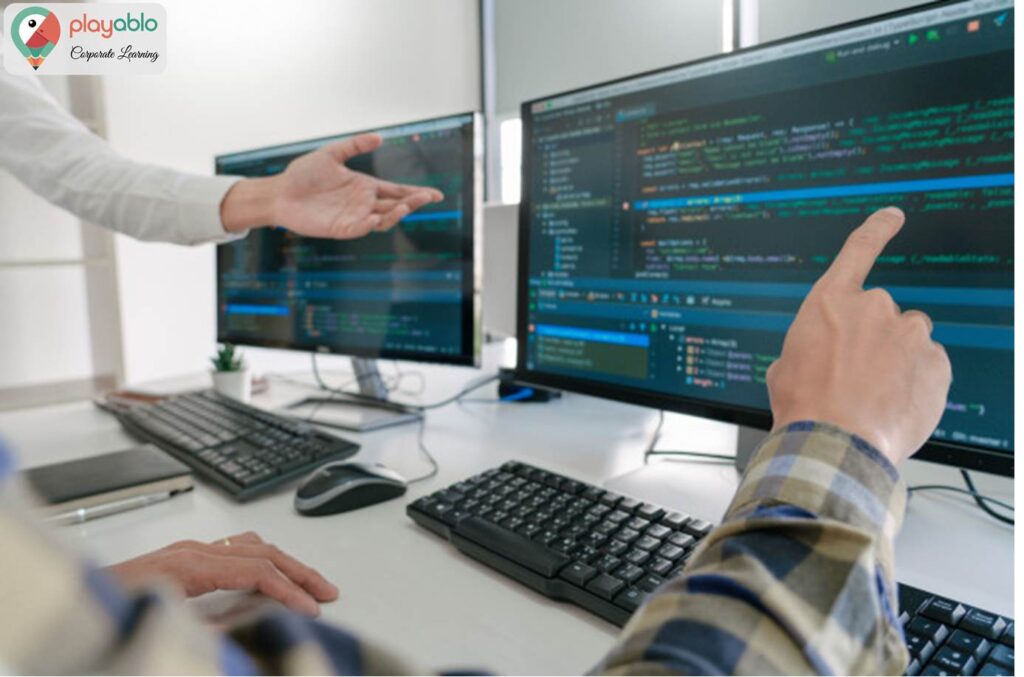How much does a free LMS really cost? Well, we have already discussed how to calculate the cost of an enterprise LMS. We have also discussed the pros and cons of an open-source vs SaaS LMS. Open-source software (OSS) is an effective example of open collaboration. A licensed source code gives users the option to use, study, change, and distribute the software. In EdTech (for both corporates and educational institutions), an OSS LMS is useful for several activities. For instance, blended learning, distance learning, flipped classroom, and e-learning.
Several users opt for an open-source LMS, believing that it is free. But at the end of the day, does it arrive at zero cost? Yes, the source code of the software is available openly for download and is free to use. But there are several hidden costs that organisations must be aware of before opting for this solution. And today, we are here to enlighten you about the real, long-term price of the so-called ‘free LMS’. Therefore, let’s get on with it!
Table of Contents
What Are the Hidden Costs in an Open-source Free LMS?

Installation and Customization
It’s true that once you download and install a free LMS, you can instantly access the code without paying any additional fee. You can even avail yourself of the user licenses free. However, the issue arises when you decide to get the LMS running. You have to scour for the necessary skills required to install the server. Additionally, you need to set up an extensive hosting infrastructure, which can handle several users simultaneously. For the purposes mentioned above, you have to deploy your IT team or recruit external experts. In both cases, you end up spending quite an amount of money.
Again, most of the reputed open-source LMSs have several rich features. They come with the flexibility to customise features and designs as per your specifications. However, after installing the software, you require to personalise the experience according to your brand image. You will also need to configure specific features. Even for these purposes, you can take the help of your IT department or an implementation partner — which arrive on their expenses. The entire process of setting up the server, customisation, and branding demands professional guidance or inputs from your in-house teams.
Hosting
Once you complete the installation and customisation processes, you have to consider hosting your free LMS as the users will need to access the software for learning and training. You either can opt to host the LMS on-premise by buying the specified hardware or host the LMS on the cloud. Even in the latter case, you need to subscribe to a reliable hosting service. Usually, the cloud is cheaper when compared to a hardware purchase. Therefore, you require to weigh your choices and go for a hosting solution that best meets your budget.
Technical Support

It’s rare for open-source, free LMSs to offer dedicated and consistent tech support. You will usually have access to forums where finding a solution for a time-bound problem is difficult. Since the customisation and administration of an open-source LMS is solely your responsibility, you will need to solve technical roadblocks like de-bugging and upgrades on your own. You can read tutorials available on the internet.
But this process consumes your precious hours. Again, you will need to invest in a dedicated IT team or external experts to give you timely solutions. Are you expecting your learners to consume the training sitting on at their desk via a web browser or on their iPhones and Android devices? Do you think they will always be online with access to a data network or even when they are offline? Creating mobile learning apps to access your LMS will require very specialised technical skills.
Read More: Mobile Learning – Learning on the go
Training and Administration
It’s challenging to administer most of the open-source, free LMSs. You have to seek expert assistance. And this demands money and a budget. The choice is yours — do you want to deploy your in-house staff, or do you wish to hire an external professional. Will they be full time or part-time? Moreover, you will also need to offer the necessary training to your LMS administrators.
Ad: PlayAblo’s Enterprise-Grade Micro-Learning platform is for the modern corporate learner. Micro-Learning, along with assessments and gamification features, ensures learning outcome measurement along with sustained engagement.
Find out more and request a custom demo!
Regular Upgrades
After the customisation and setup of an open-source, free LMS, you have to improvise on its features as your organisation evolves continually. For installing the next upgrade, you spend some extra bucks. But this cost is not included in the upfront budget. Even in such a case, you have to access expert help or IT team support for installing upgrades and adding new features. The activity mentioned above entails expenses as well.
Conclusion
Open-source and free Learning Management Systems appear to be the perfect fit when comparing them with a commercial LMS. There are no licensing costs. You even have the flexibility to customise and add features. But they do involve several hidden expenses as mentioned above — such as setup, hosting, maintenance, and support. If you already have a dedicated in-house team with all the right technical skills to handle the tasks mentioned above, you may be able to save on costs. If not, it is better to consider all the factors before picking an open-source, “free” LMS. PlayAblo LMS is a feature-rich and extremely affordable option if you think that a SaaS-based LMS might be right for your organisation.
Ad: PlayAblo’s Enterprise-Grade Micro-Learning platform is for the modern corporate learner. Micro-Learning, along with assessments and gamification features, ensures learning outcome measurement along with sustained engagement.
Find out more and request a custom demo!







3 Comments
Comments are closed, but trackbacks and pingbacks are open.